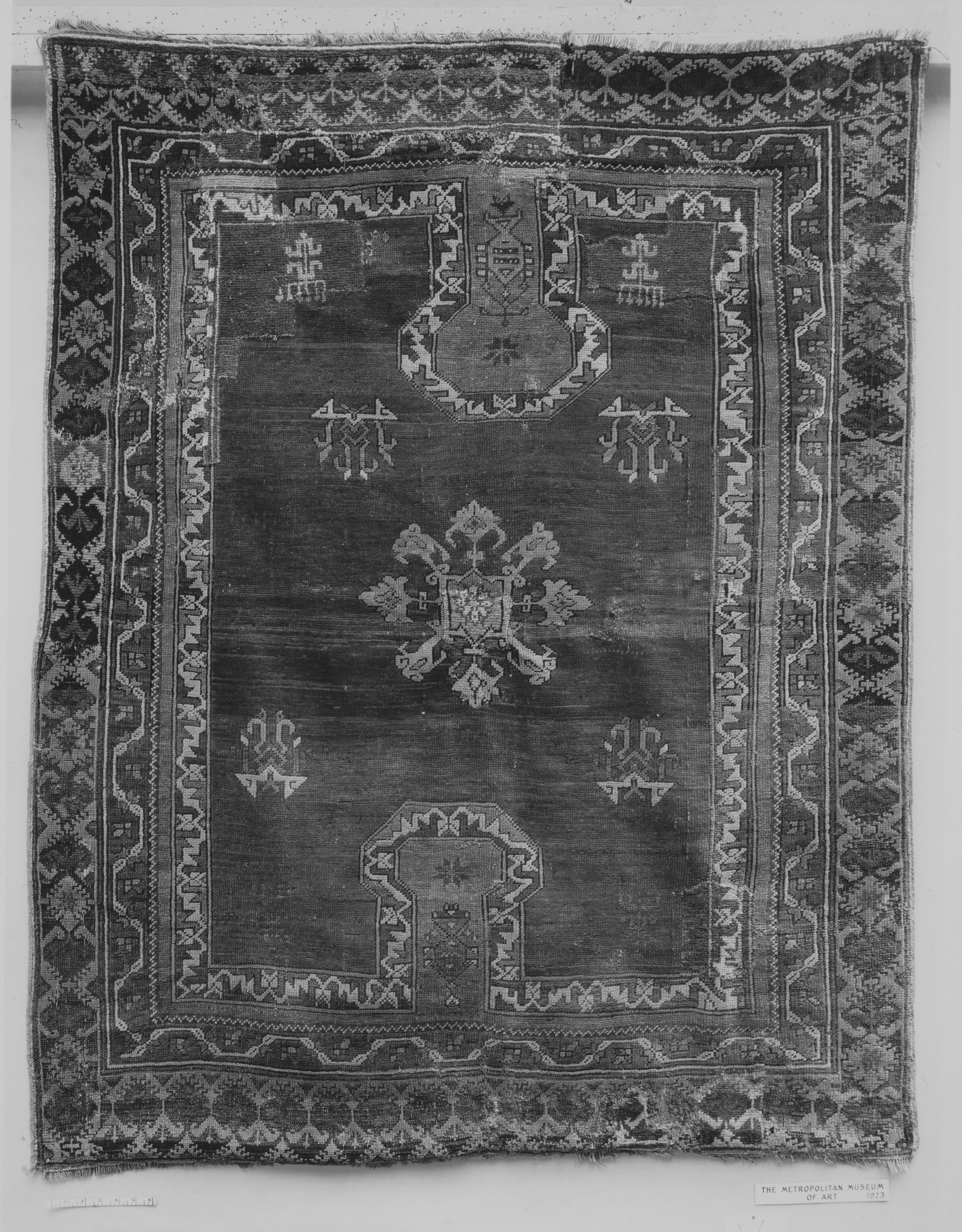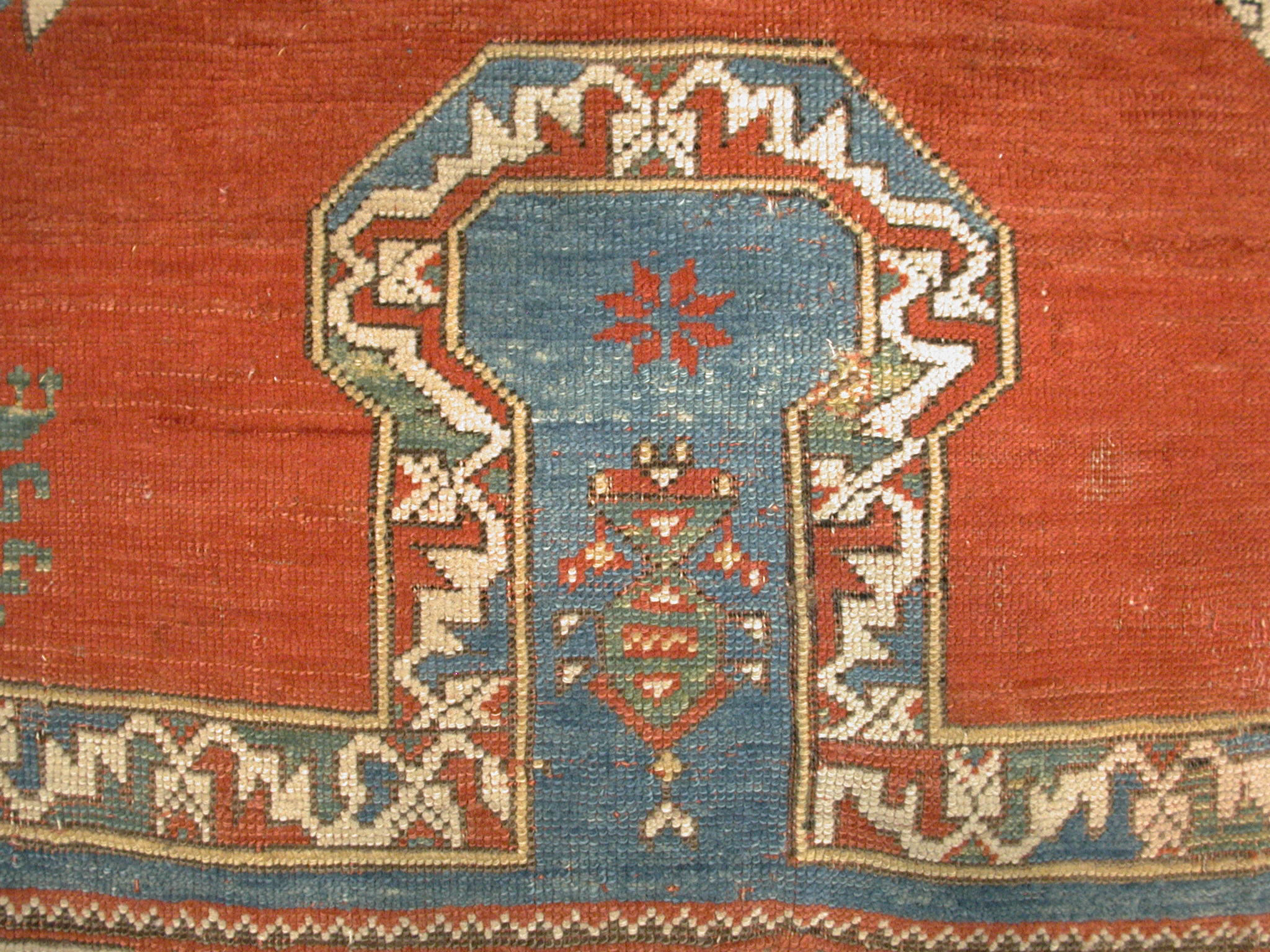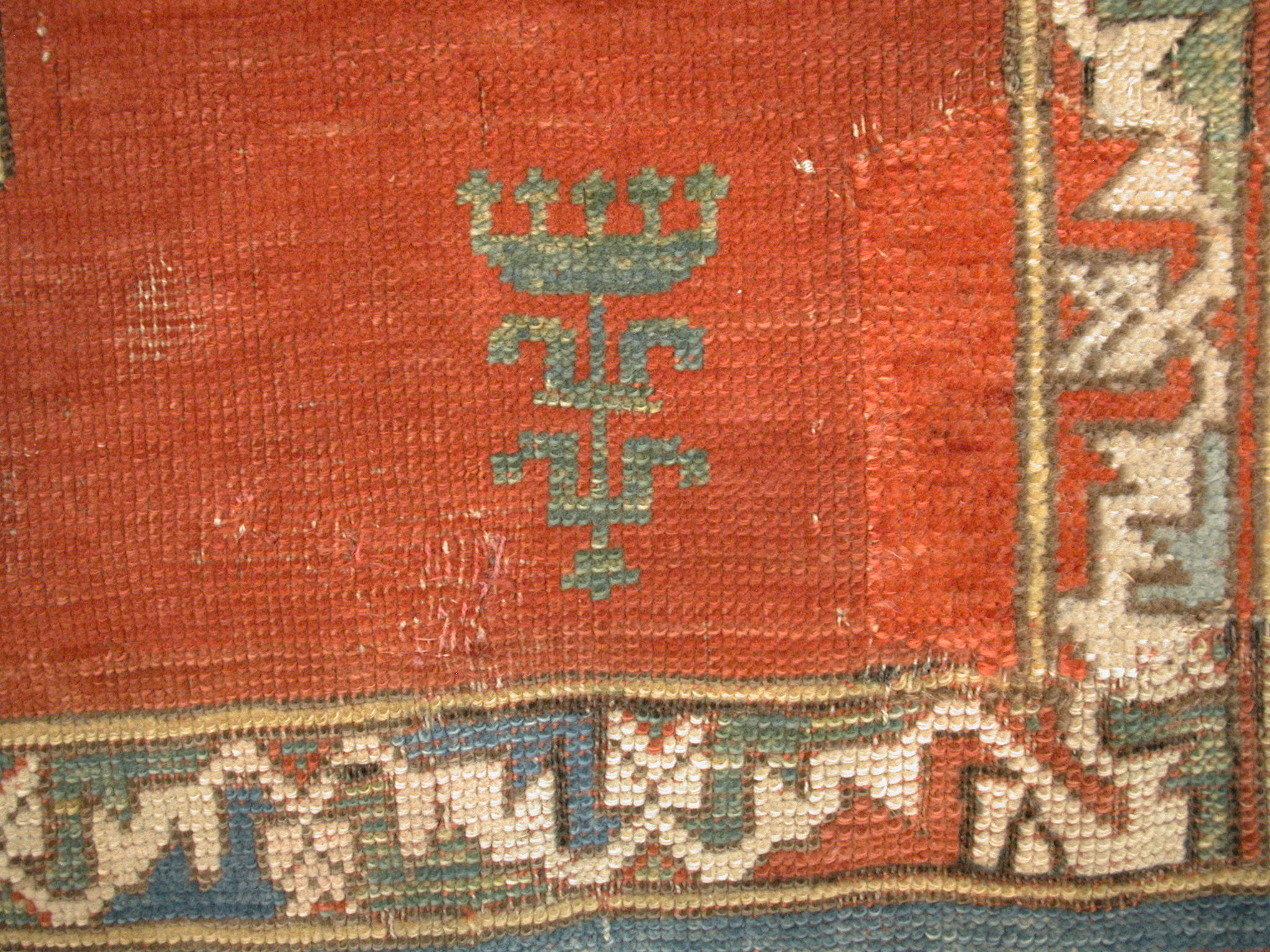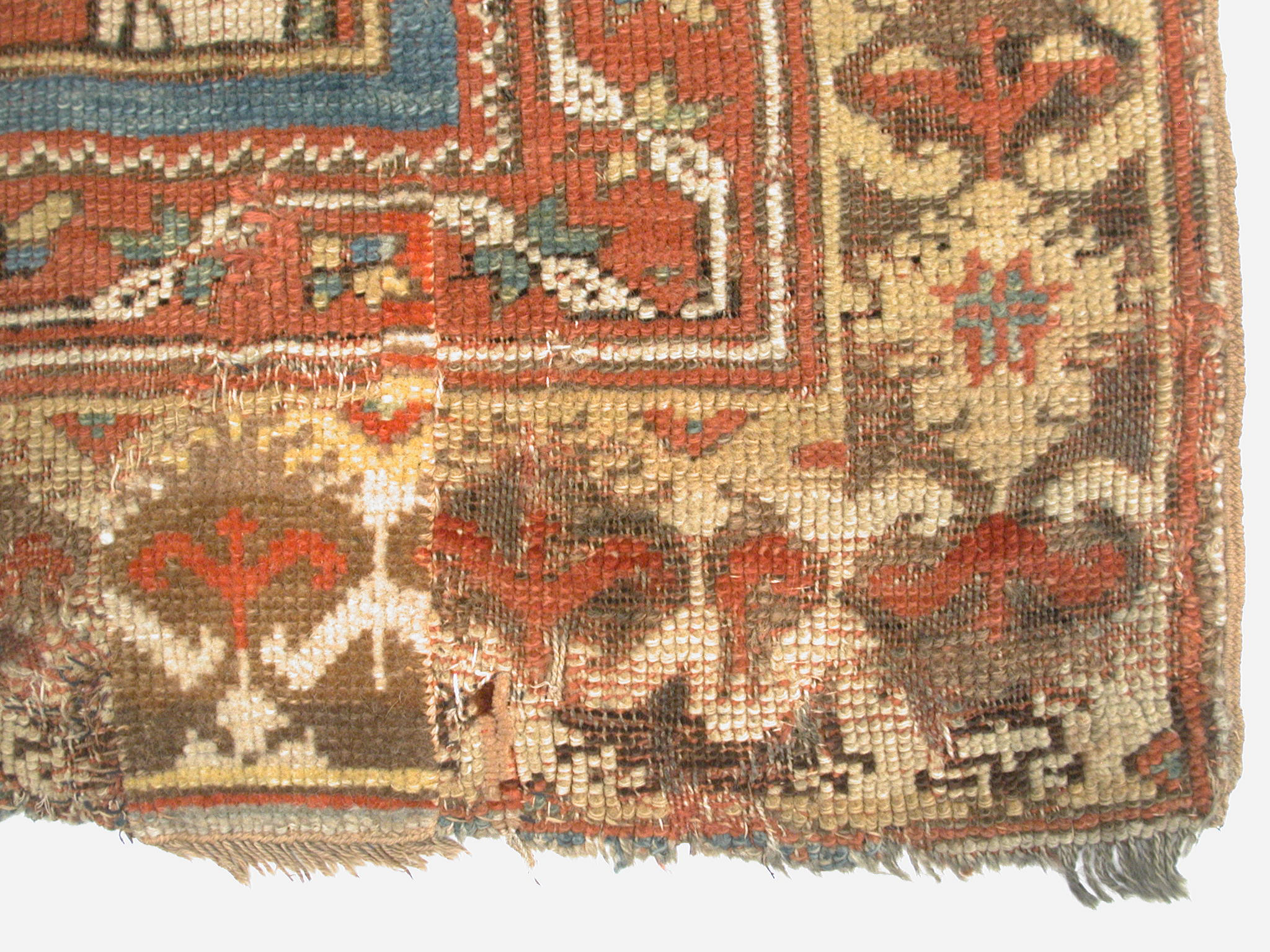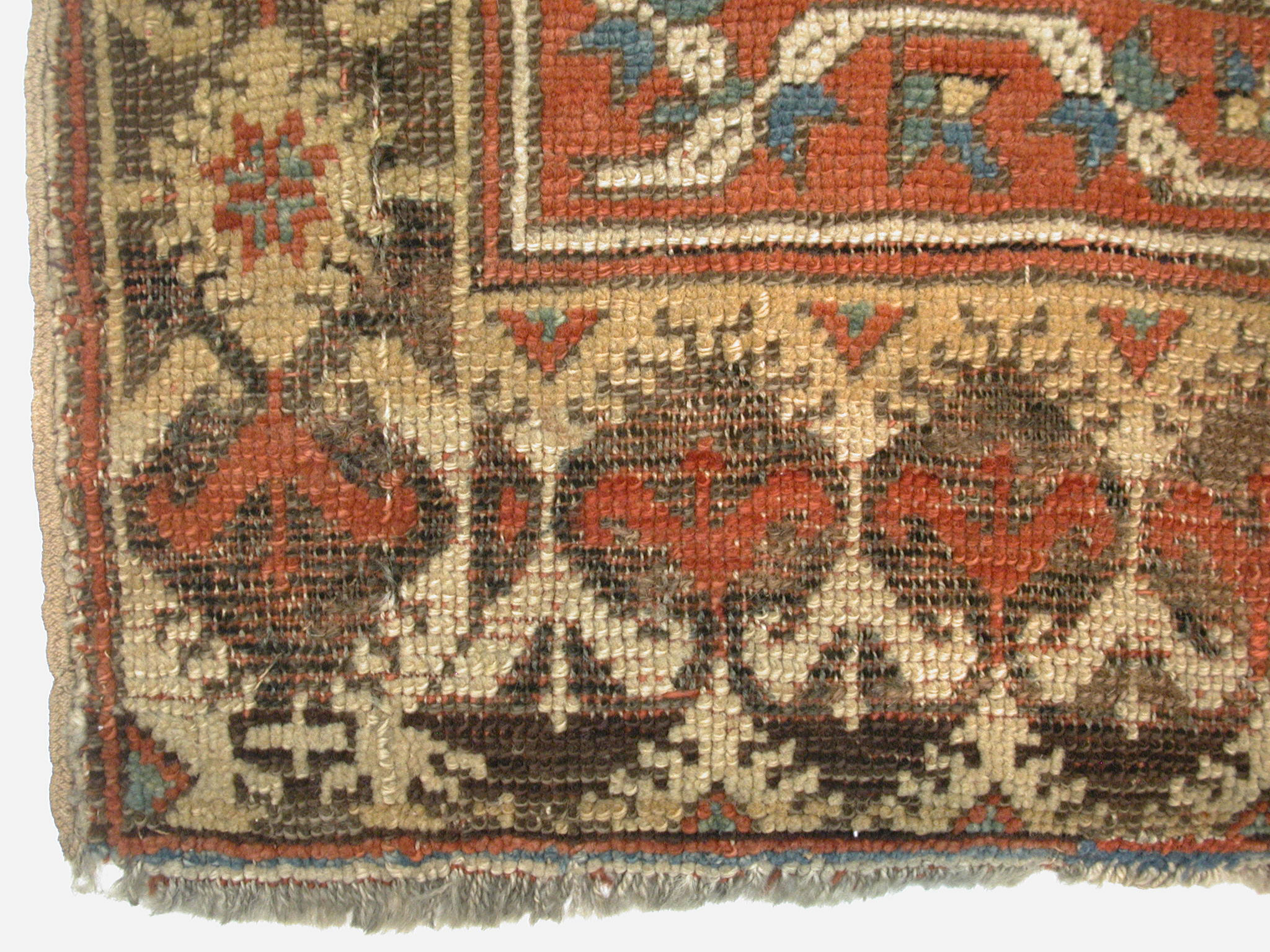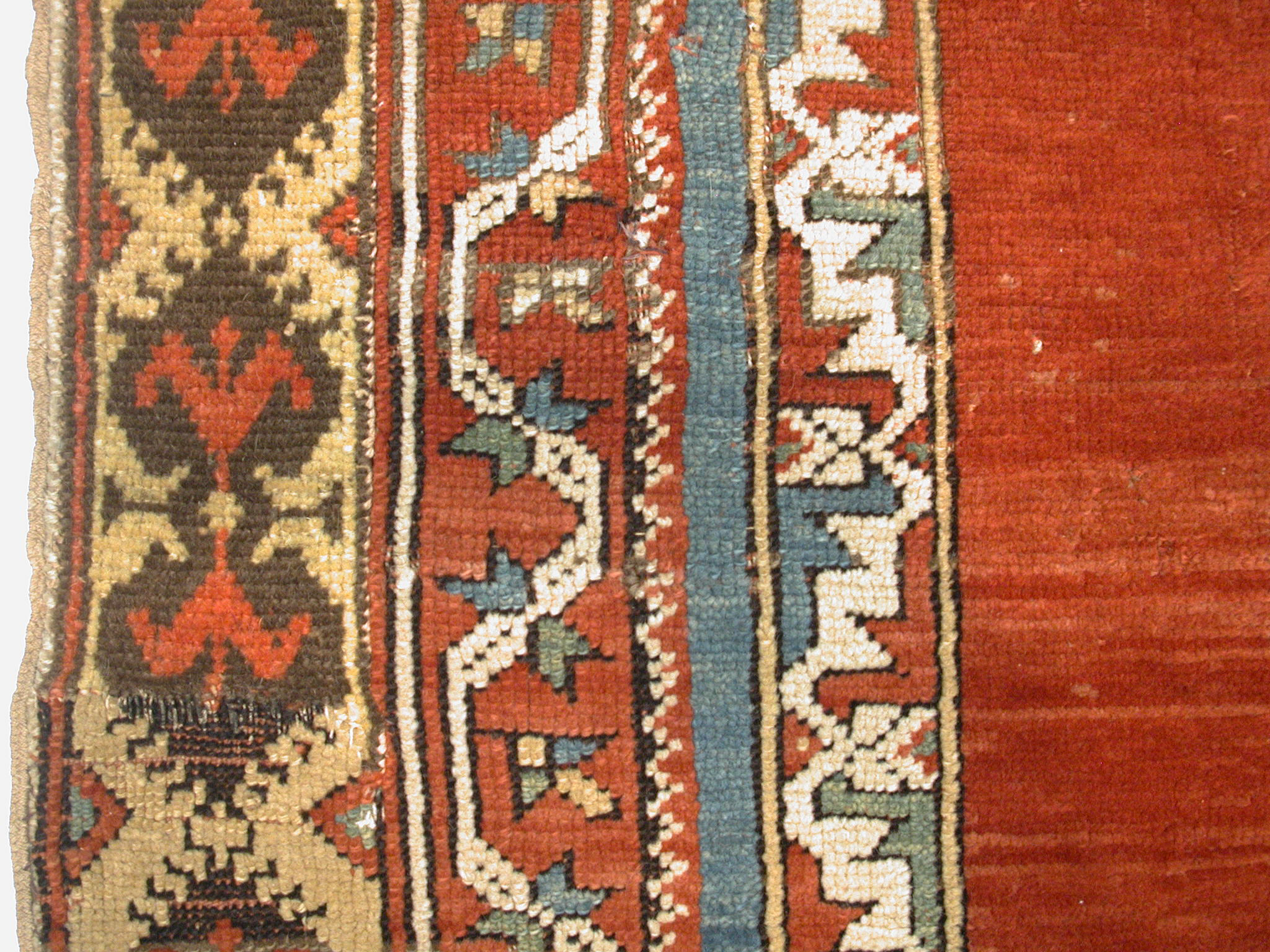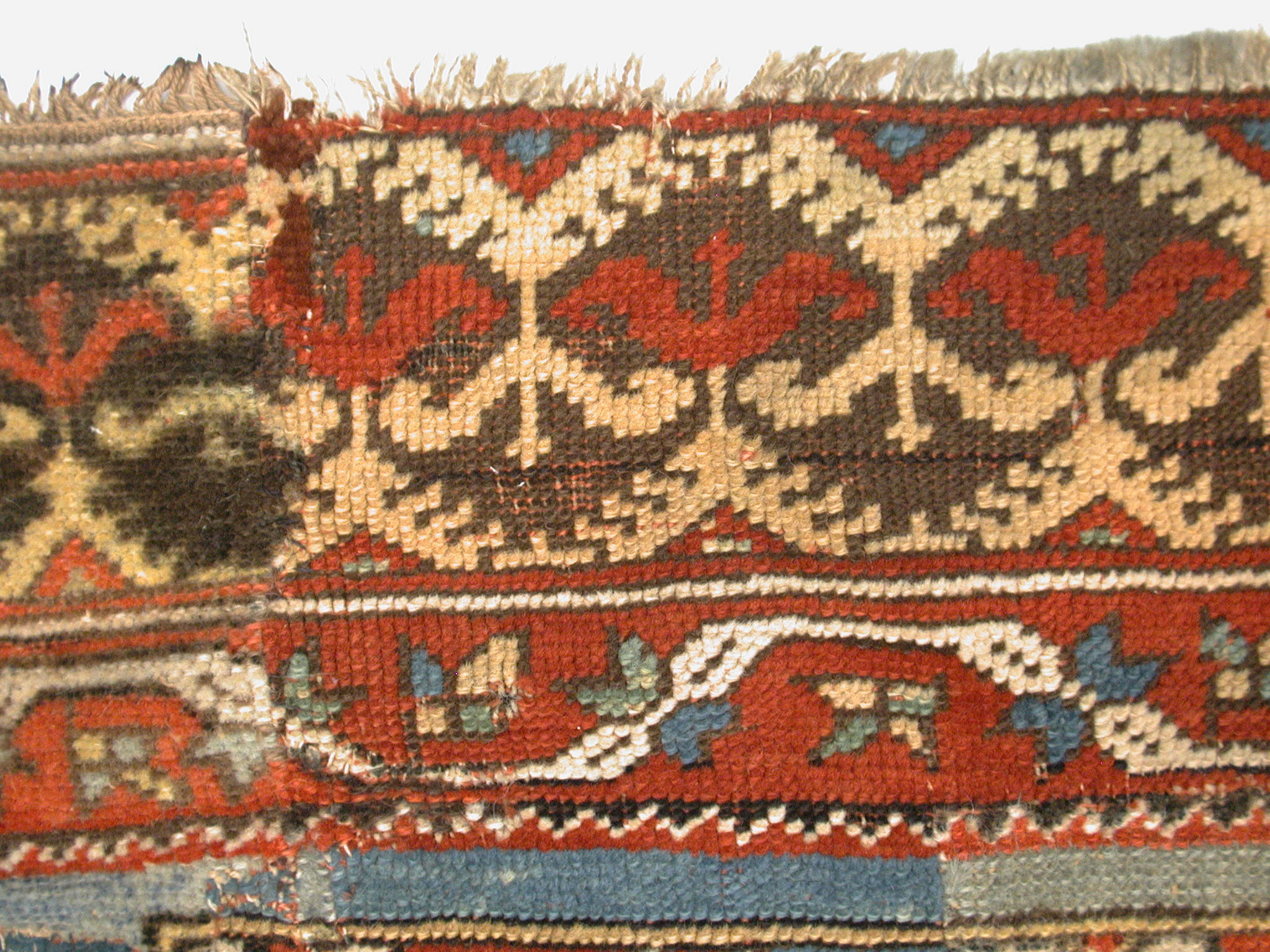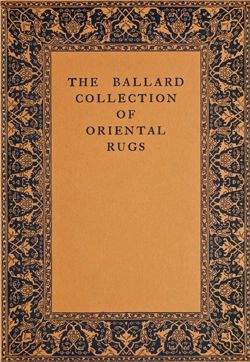"Bellini" Carpet
The center of this carpet features a doubling of the distinct octagonal pattern found in some classical "Bellini" rugs (such as no. 22.100.114). The significance of this unusual keyhole-shaped motif is a source of debate. Some scholars interpretet it as a fountain associated with ablutions (ritual cleaning) before prayer or link it to a keyhole design known from depictions of the Ka‘ba. This holy building in Mecca is traditionally shown as a black cubicle with a surrounding colonnade that resembles a keyhole. Others see in it a mihrab, or prayer niche indicating the direction of Mecca. While these interpretations all relate to prayer and symbolize a gateway to paradise, the shape also resembles the horseshoe arch found in the architecture of Islamic Spain and northern Africa.
Due to rights restrictions, this image cannot be enlarged, viewed at full screen, or downloaded.
This artwork is meant to be viewed from right to left. Scroll left to view more.


